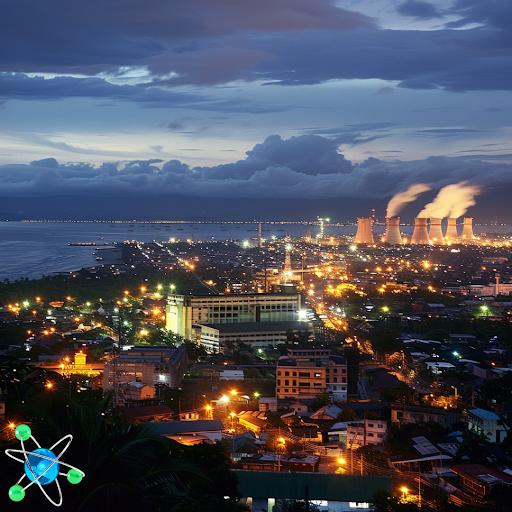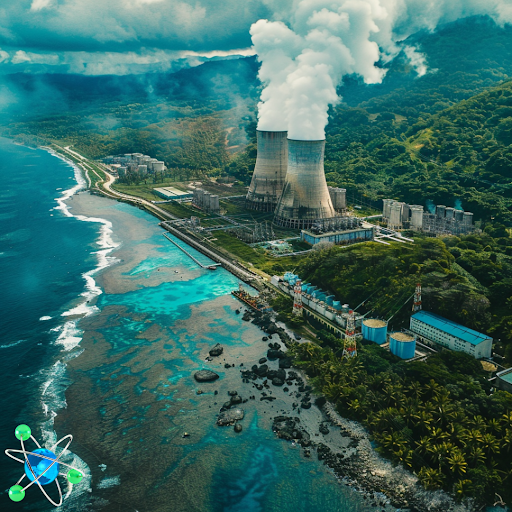
- The Philippines is switching to nuclear energy to address climate change, ensure energy security, and reduce reliance on expensive fossil fuels, especially as their electricity demand is expected to more than triple by 2040.
- The country plans to implement small modular reactors (SMRs) and possibly revive the Bataan nuclear power plant, leveraging a 123 agreement with the US to facilitate nuclear energy projects.
- Despite challenges like a lack of licensed nuclear engineers and the need for public acceptance, the Philippines aims to commission its first nuclear power plant by 2027, enhancing global investment appeal and economic growth.
As the battle for climate change arises, the demand for clean and reliable sources of energy is apparent. The Philippines is one of the many countries around the world who are taking the initiative to face climate change by switching to nuclear energy. Thanks to the relationship between the US and the Philippines, the Philippines is exploring their capabilities in nuclear energy such as implementing SMR and much more, leading a great example to a more sustainable future.
Why the switch? With the expectancy to more than triple electricity demand by 2040, it’s no wonder why the Philippines is switching to nuclear energy. By turning to nuclear energy to supply power, not only does it battle climate change but also promotes the country’s main goal, which is energy security for the country. Coal alone made up 44% of the country’s electricity mix showing their reliance on expensive fossil fuels to support the country’s growing needs for electricity. The Malampaya gas field in the Philippines, which provides energy for a large portion of the Philippines, is depleting, making the urge to find a reliable source of energy more urgent than ever. The inadequate power supply also causes the country to have common power outages. This switch to nuclear energy is important for the country’s future for energy security as fossil fuels such as gas and coal will only continue to rise for years to come.
How would the Philippines accomplish this? With the growing concern for energy security, the Philippines have made plans to implement SMRs and possibly revive the Bataan nuclear power plant to start off with their nuclear energy goals. Thanks to the 123 agreement between the US and the Philippines, the US is able to “share equipment and material with the Philippines” said US Secretary of State Anthony Blinken. This opens the future to more nuclear energy projects in the Philippines as it lays the necessary legal framework for working with nuclear power. With the implementation of SMRs, small modular reactors, the Philippines is able to provide energy locally and conveniently. Although reviving the Bataan nuclear power plant may seem costly, it would cost only ⅓ the amount if it were to be replaced with a coal based facility. Energy security will rapidly succeed in the Philippines as nuclear power continues to be a solution towards a clean and reliable source of energy.
What is the current state of nuclear power in the Philippines?The PEP, Philippine Energy Plan, recognizes the need to raise awareness and acceptance for nuclear power in order to proceed with further advances in nuclear energy use. Another concern faced with moving forward with nuclear energy is the lack of licensed nuclear engineers. Despite the challenges of insufficient knowledge of nuclear energy within the country, the Philippine’s ambition towards a secure, clean, and reliable energy centered future is unwavering. The Philippines has many goals for nuclear energy as they hope to commision the country’s first nuclear power plant by 2027 the earliest. By turning to nuclear energy, not only does the Philippines benefit from gaining energy security, the country also gains more appeal as global investment. Through these global investments, the country’s economy would flourish and raise the standard of living for the people of the Philippines.
Switching to clean and reliable energy is important for growing a country such as the Philippines. With expectations to over triple the electricity capacity by 2040 combined with expensive imports on coal and a depleting gas reserve, finding energy security should be a priority. Thanks to the 123 agreement between the US and the Philippines, the country is able to develop and progress towards a future surrounding clean and reliable energy. By expanding the education of nuclear energy in the Philippines, not only would the country have more acceptance over their energy plans, the country would be able to raise its people’s standard of living as well as flourish economically by having more global appeal. Through the increasing popularity of nuclear energy, countries like the Philippines are able to battle climate change, build strong global relationships, and gain energy security.

